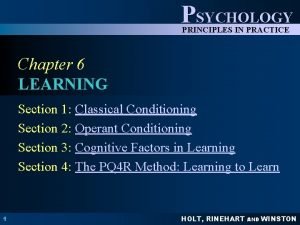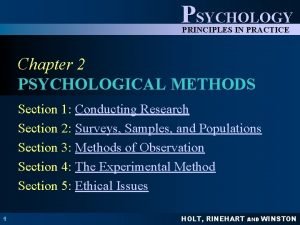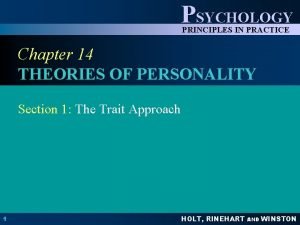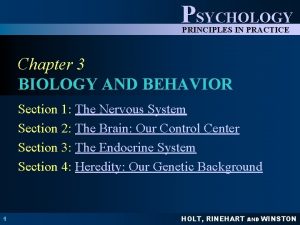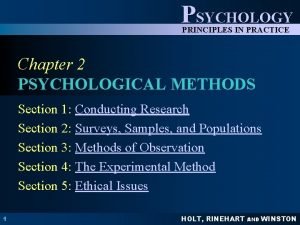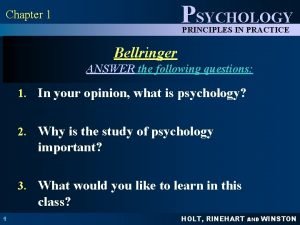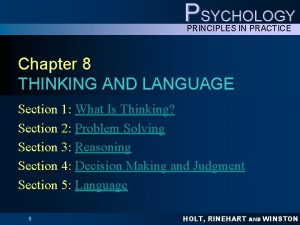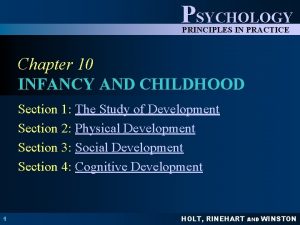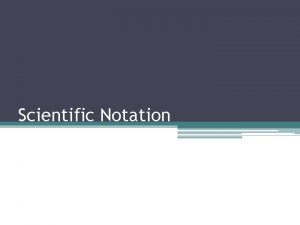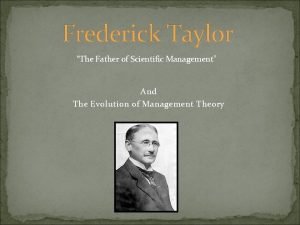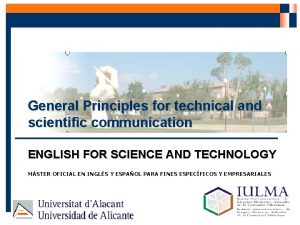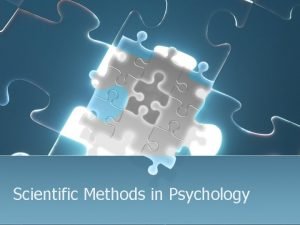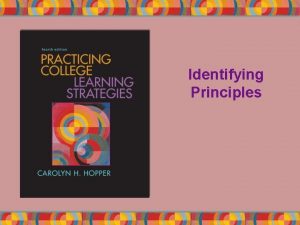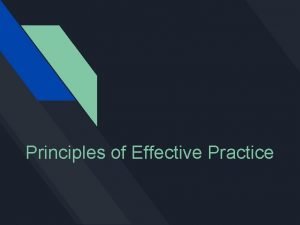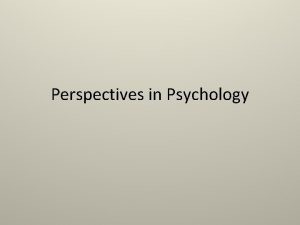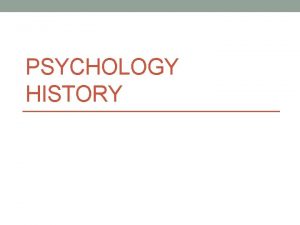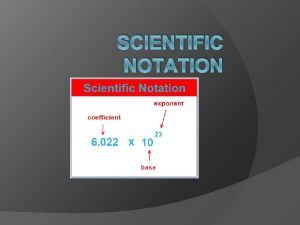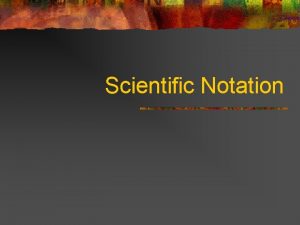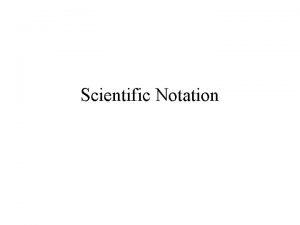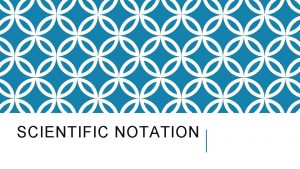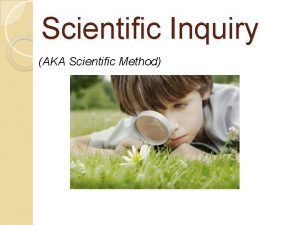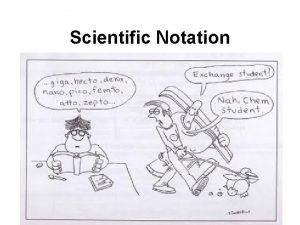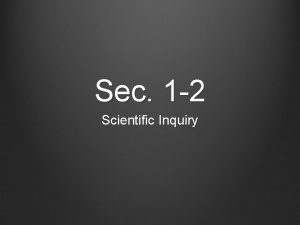Psychology Principles in Practice Psychology Psychology The scientific



















- Slides: 19

Psychology Principles in Practice

Psychology Psychology: The scientific study of human behavior and mental processes Where do we Psychology around us?

Behavior/Cognitive Cognitive: Mental processes including thoughts, dreams, perception, and memories Behavior: Actions people can observe or measure

Behavior Any action people can observe or measure Includes: Eating/Drinking Brain Activity Walking/Running Anything almost

Psychological constructs Things we can’t touch or measure Anger, Happiness, Hurt – These are behaviors that usually can not be see or measured -Behavior or Psych Construct? – 1. 2. 3. 1. You think about how much you dislike the Kardashians 2. Walk to the TV to turn off Tosh. O 3. You think how much you hate women’s tennis

ODE Observe, Describe, and Explain The ODE gives us a theory Theory: A statement that explains your findings Theories create Principles: A truth or law

Look around You Have you ever judged people…chances are you have Have you ever people watched? The Lecture Circuit: http: //www. imdb. com/video/hulu/vi 3409773337/

Traditional Schools of Psychology Structuralism Functionalism Psychoanalysis Gestalt Behaviorism

Early Beginnings Officially a science in the late 1800’s Willhelm Wundt is considered the “father of Psychology” “Voont” applied scientific principles to studying the mind He did this through “objective introspection” Def: Measuring one’s own thoughts and metal activities Wundt would place an object in front of someone and ask them what they thought

Objective Introspection Example Look at the Chalkboard What are you thinking about? How does it make you feel? What are you repressing? What flaws does this approach have?

Structuralism Major Influence: Wilhelm Wundt and Edward Tichener Based on Wundt’s beginnings this focuses on the structure of the mind and how it works Focus: Each thought is believed to come from an experience or thought about something else Each person has to think through his/her own mind to answer – This is Introspection

Functionalism Major Influence: William James; Father of American Psychology Focus: How the mind functions effect daily life James argued that once you started thinking about what you were thinking about its was no longer what you would have been thinking… Studying the conscious (what you are thinking right now) was not possible to him Rather, he asked why do some people avoid eye contact, walk a certain way, etc

Gestalt (Gesh-Talt) German for – An organized whole Major influence: Max Wertheimer Focus: How the mid perceives parts and wholes Wertheimer believed if you break things down they are just components, no longer a whole Example: You take apart an engine – Now you have engine parts but not an engine

Gestalt Drawings

Gestalt Cont’ Continuity: Lines are seen as following the smoothest path Proximity: Objects near each other get grouped together Pragnanz: We organize in the simplest way possible Closure: Objects grouped together are seen as a whole Similarity: Items that tend to be similar we group together

Examples Name the correct law suggested by Gestalt Psychology:

Create You Own Take an 8 ½ by 11 sheet of paper and create your own Gestalt Drawing Be creative, take your time, make them pretty 10 Points

Psychoanalysis Major Influence: Sigmund Freud Focus: The unconscious, repressed memories and experiences that determine behavior Freud was the first to look beyond the now (conscious) and explore why people think/act outside conscious thought Freud harped on childhood memories and sexual desires believing personality was formed by age 6. More on Freud later

Behaviorism Major Influence: Ivan Pavlov and John Watson Focus: Observable behavior that is learned over time, not conscious or unconscious thought/feelings This was a return to science and data, not thought or feeling Ivan Pavlov: Conditioning Experiment John Watson: Little Albert Experiment
 Psychology principles in practice
Psychology principles in practice Psychology: principles in practice solutions
Psychology: principles in practice solutions Psychology principles in practice
Psychology principles in practice Psychology principles in practice
Psychology principles in practice Psychology chapter 2 section 1
Psychology chapter 2 section 1 Psychology principles in practice chapter 1
Psychology principles in practice chapter 1 Psychology principles in practice
Psychology principles in practice Psychology principles in practice
Psychology principles in practice Information gathered during an experiment
Information gathered during an experiment How is a scientific law different from a scientific theory?
How is a scientific law different from a scientific theory? Dividing scientific notation worksheet
Dividing scientific notation worksheet Scientific notation practice quiz
Scientific notation practice quiz Fredrick w taylor
Fredrick w taylor Principles of science
Principles of science Hình ảnh bộ gõ cơ thể búng tay
Hình ảnh bộ gõ cơ thể búng tay Bổ thể
Bổ thể Tỉ lệ cơ thể trẻ em
Tỉ lệ cơ thể trẻ em Gấu đi như thế nào
Gấu đi như thế nào Chụp phim tư thế worms-breton
Chụp phim tư thế worms-breton
